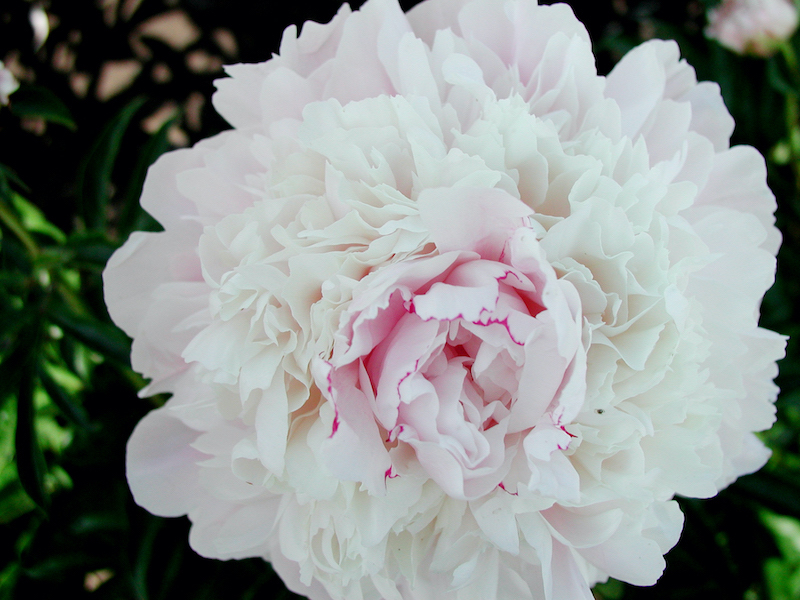Garden Peonies (Paeonia lactiflora) generally bloom in late spring and produce a profusion of gorgeous large flowers, often deliciously fragrant. Peonies are long-lived perennials that can delight for decades. Providing them with the correct growing environment will ensure they bloom for years to come.

Common Reasons Why Peony Isn’t Blooming
Peonies require a few conditions to keep them growing, blooming, and thriving. Full sun and shallow planting in well-draining soil are important requirements. However, it is natural for young Peonies to have only a few blooms until they mature; oftentimes, they will bloom heavily within the third, fourth, or fifth growing season. Plant Peonies where their ‘eyes’ or growing nodes are at a depth of 1 1/2 to 2 inches below the soil line. Another reason why Peonies may not be blooming is the clump needs division to rejuvenate the plant; essentially, the tubers become too crowded underground. Make sure that a taller shrub or nearby tree isn’t casting shade on the Peony. Using a fertilizer with higher nitrogen may also decrease blooming. Certain varieties of Peonies can be prone to blight or mold that affect young buds, and planting too deep can promote root rot, which will affect blooming.
Pruning Peonies To Help It Bloom
Leave foliage on the plant until fall, as this helps energize the root system. Cut foliage an inch or so above ground level in the fall, discard, and do not compost. Throughout the growing season, trim off any damaged foliage or foliage that has signs of mildew. Removing spent blooms will keep the plant looking tidy.

Fertilizing Peonies To Help It Bloom
Planting Peonies in well-draining, rich soil, with plenty of organic material such as garden compost is really all the nutrition Peonies need. They are not heavy feeders, and too much fertilization can damage the plant's tubers. When selecting a fertilizer, note that nitrogen encourages foliage growth at the expense of flowering. If you want to add additional nutrients to your Peonies, select a lower-nitrogen fertilizer with an NPK ratio of 5-10-10 and apply it in the early spring once stems are emerging from the ground. Because new growth appears from the eyes at the soil level, be careful not to disturb the dark red tender shoots emerging in spring. Water-soluble fertilizers are sometimes easiest to apply for this reason and with Peonies, less is more.
Get Peonies To Produce More Blooms
Remember Peonies are long lived but slower growing and will need a few years to reach maturity, so practice patience. Peonies will produce a few blooms when the plants are young, but the real flower show starts after three or more years of growth.
Why Peonies Aren’t Blooming
- Planted too deep
- Need more sunlight
- Low soil fertility
- Tubers need to be divided
- Insufficient moisture
- Soil is too acidic
- Overfertilization
- Disease
- Unexpected frost or freezing in late spring
 |
Author Chris Link - Published 02-14-2023 |
